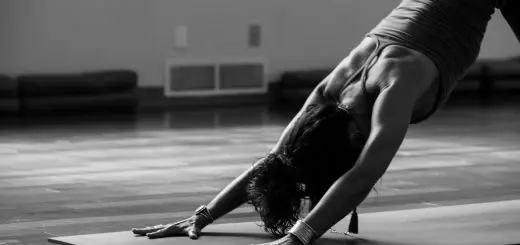Where Did Yoga Originate? The Origins of This Timeless Practice

Looking for more amazing products? Check out our online store and explore our collection here! Happy shopping!
Before diving in, please note: This post is for informational purposes only. If you’d like to know more about how we approach topics, feel free to check out our friendly Disclaimer Page.
Hey there, amazing readers! 
We’re committed to delivering quality posts, and your support (even just sticking around despite the ads) means everything to us. So, bear with us, and thanks for helping us keep the good vibes rolling. Now, on to the fun stuff!
TRANSLATE BUTTON AT THE END OF THE ARTICLE
A Quick Overview
Yoga has become a popular practice worldwide, offering not just physical exercise but mental and spiritual benefits.
But have you ever wondered where this ancient practice originated?
Yoga’s roots run deep, primarily in India, and it has evolved over millennia.
In this article, we’ll dive into the journey of yoga, exploring its origins and how it has transformed into the practice we cherish today.
Buckle up as we travel back in time to uncover the fascinating story of yoga!
The Ancient Roots of Yoga: A Journey Through Time
To understand yoga’s origins, let’s go back several thousand years.
Archaeological findings suggest that yoga-like practices existed as far back as 3000 BCE in the Indus Valley civilization, where seals depicting figures in yoga postures were discovered.
This ancient civilization thrived in what is now Pakistan and northwestern India.
But yoga is more than just postures.
It’s a comprehensive philosophy that encompasses lifestyle, meditation, and spirituality.
The earliest forms of yoga likely involved meditation and breathing practices aimed at transcending the physical body.
These early practitioners sought a deeper connection with themselves and the universe.
Over time, yoga began to intertwine with other spiritual traditions, especially Hinduism.
As societies evolved, so did the interpretation of yoga, adapting to the cultural and spiritual needs of the people.
This evolution took yoga from a mystical practice into a structured discipline.
In essence, yoga’s journey through time reflects humanity’s quest for balance, peace, and understanding.
We are still on this journey today, with yoga offering new insights into our complex lives.
India: The Heartland of Yoga’s Beginnings
India is often hailed as the birthplace of yoga, and for good reason.
The cultural and philosophical underpinnings of yoga are deeply rooted in Indian traditions.
The ancient sages and yogis lived in the forests and mountains, seeking enlightenment and wisdom.
During the Vedic period, which began around 1500 BCE, the foundations of yoga began to solidify.
The Vedas, India’s oldest sacred texts, contain hymns, rituals, and philosophical teachings.
They emphasize the importance of meditation and spiritual practices, laying the groundwork for various yoga paths.
As centuries passed, various schools of thought emerged in India, each contributing to the rich tapestry of yoga.
This vibrant environment nurtured the development of diverse practices, from the highly philosophical to the physically demanding.
Some key figures in this history include Patanjali, who compiled the Yoga Sutras, and the great Indian sage, Swami Vivekananda, who brought yoga to the West in the 19th century.
The journey of yoga through India is not just historical; it’s a living tradition that continues to thrive.
Exploring the Vedic Texts: Yoga’s Early Mentions
The Vedic texts, particularly the Rigveda, offer some of the earliest references to yoga.
These texts describe various religious rituals and meditative practices, hinting at the spiritual dimensions of yoga.
For example, the concept of "yuj," which means to unite or bind, is central to yoga’s philosophy.
It implies a connection, whether between the self and the divine or between the mind and the body.
The Vedas express how meditation and breath control can lead to a higher state of consciousness.
Additionally, the Upanishads, which are philosophical commentaries on the Vedas, delve deeper into the metaphysical aspects of yoga.
They explore concepts like the relationship between the soul (Atman) and the ultimate reality (Brahman).
This philosophical inquiry set the stage for the more elaborate yogic practices that followed.
These early texts may seem dense and challenging, but they are integral to understanding yoga’s essence.
They provide a glimpse into a time when spirituality was intertwined with daily life.
The Upanishads: Spiritual Insights and Practices
Moving beyond the Vedic texts, the Upanishads represent a shift toward introspection and personal experience.
Dating from around 800 to 400 BCE, these texts delve into meditative practices that encourage individuals to experience spiritual truths firsthand.
The Upanishads emphasize self-realization and the importance of meditation as a means to achieve it.
They teach that yoga is not a mere physical practice but a path to understanding one’s true nature.
This aligns with the idea that the mind, body, and spirit must work together for holistic well-being.
The dialogue format of many Upanishads makes them relatable and engaging.
They present teachings through discussions between teachers and students, making complex ideas accessible.
For instance, one famous Upanishad, the Chandogya, discusses the concept of "Tat Tvam Asi," or "You are that," which indicates the oneness of the individual soul and the universal spirit.
This profound realization serves as a cornerstone for many yogic practices today.
The Influence of Hinduism on Yoga’s Development
As Hinduism flourished, so did yoga.
The religious texts, rituals, and beliefs of Hinduism greatly influenced the evolution of yoga practices.
Hindu scriptures like the Bhagavad Gita elaborate on the philosophical aspects of yoga, emphasizing devotion and selfless action.
The Gita introduces paths such as Bhakti Yoga (the path of devotion), Karma Yoga (the path of selfless action), and Jnana Yoga (the path of knowledge), each guiding practitioners towards spiritual fulfillment.
This diversification of yoga styles showcases the adaptability of yoga to various life circumstances.
Hinduism’s pantheon of deities also plays a role in yoga’s spiritual aspect.
Many yogic traditions incorporate devotional practices, rituals, and chants that connect practitioners to a higher power.
These elements create a rich tapestry that elevates the physical practice into a spiritual journey.
Through centuries of development, yoga became a crucial part of Hindu culture and philosophy.
Its teachings resonate with life lessons that still guide us today.
Buddhism and Jainism: Shaping Yoga’s Path
Buddhism and Jainism emerged around the 6th century BCE, adding new dimensions to the practice of yoga.
Both religions emphasize meditation, mindfulness, and ethical living, complementing and sometimes challenging Hindu ideas.
Buddha’s teachings on the mind and the path to enlightenment introduced many people to meditation as a central practice.
The concept of mindfulness—being fully present in the moment—is a fundamental aspect of both Buddhism and yoga.
Many yogic practices today draw on these principles, showing the interconnectedness of these traditions.
Similarly, Jainism emphasizes non-violence (ahimsa) and self-discipline, which have influenced yoga’s ethical guidelines.
The yogic principles of compassion and self-control resonate with Jain beliefs, highlighting how these religions have enriched the yoga tradition.
The cross-pollination of ideas among these spiritual paths created a diverse landscape where yoga could thrive.
Today, many people practice yoga with elements from Buddhism and Jainism, illustrating the practice’s adaptability.
The Yoga Sutras: Patanjali’s Timeless Wisdom
One of the most significant milestones in yoga’s history is the compilation of the Yoga Sutras by the sage Patanjali around the 2nd century BCE.
This text is a foundational work that systematizes yoga philosophy and practice, making it accessible to a wider audience.
Patanjali outlines the eight limbs of yoga (Ashtanga Yoga), which serve as a guide for spiritual development.
These limbs include ethical precepts (Yama and Niyama), physical postures (Asana), breath control (Pranayama), sensory withdrawal (Pratyahara), concentration (Dharana), meditation (Dhyana), and ultimately, enlightenment (Samadhi).
The Yoga Sutras emphasize the importance of mental discipline and self-awareness.
They encourage practitioners to delve into their inner selves, promoting a holistic approach to well-being.
Patanjali’s insights remain relevant today, guiding countless individuals on their yoga journeys.
By framing yoga as a comprehensive system rather than a collection of postures, Patanjali elevated the practice to a spiritual path.
His work continues to inspire yogis around the globe, proving the timeless nature of his wisdom.
Hatha Yoga: The Evolution of Physical Practice
As yoga continued to evolve, distinct styles began to emerge.
Hatha Yoga, which translates to "forceful yoga," became prominent around the 11th century CE.
It emphasizes physical postures and breath control, making it accessible to people of all backgrounds.
Hatha Yoga focuses on the practice of Asanas and Pranayama, aiming to prepare the body for meditation.
The physical practice serves as a means to attain spiritual goals by creating balance and flexibility in both the body and mind.
Historical texts like the Hatha Yoga Pradipika, written in the 15th century, detail various techniques and philosophies associated with Hatha Yoga.
The text illustrates how physical practices can lead to spiritual awakening, further deepening the connection between mind and body.
Today, Hatha Yoga is often seen as the foundation for many modern yoga styles.
Its emphasis on the physical body has made it a popular choice for those seeking both fitness and spiritual growth.
Yoga Through the Ages: From Ancient to Modern Times
The journey of yoga from ancient practices to contemporary styles is a fascinating tale.
After Patanjali and the development of Hatha Yoga, yoga remained relatively obscure until the late 19th and early 20th centuries.
During this time, influential figures like Swami Vivekananda began to share yoga with the Western world.
He emphasized yoga’s philosophical aspects and its relevance to modern life.
This outreach sparked interest in yoga beyond India, leading to the establishment of yoga schools and studios.
In the 20th century, prominent teachers like Krishnamacharya, B.K.S.
Iyengar, and Pattabhi Jois popularized various styles, making yoga accessible to people of all ages and backgrounds.
They adapted traditional practices to suit contemporary lifestyles, catering to different needs and preferences.
As yoga gained popularity, it transformed into a global phenomenon.
Today, millions practice yoga, embracing its physical, mental, and spiritual benefits.
This widespread acceptance showcases yoga’s resilience and relevance in our fast-paced world.
The Global Spread of Yoga: A Cultural Exchange
The globalization of yoga speaks volumes about its universal appeal.
As cultures intersected, yoga found its way into diverse communities, each adding unique flavors to the practice.
Yoga studios, workshops, and retreats sprang up worldwide, making it accessible to everyone.
From the bustling streets of New York City to the serene beaches of Bali, yoga has established itself as a beloved practice.
The blending of traditional techniques with modern fitness trends has created a multifaceted yoga landscape.
Various styles, like Vinyasa, Power Yoga, and Yin Yoga, reflect this cultural exchange.
Social media has also played a crucial role in yoga’s global spread.
Platforms like Instagram have enabled teachers and practitioners to share their journeys, fostering a sense of community among yogis worldwide.
This sense of connection highlights how yoga transcends boundaries and unites us all.
Popular Yoga Styles: A Blend of Traditions
The modern yoga scene boasts a plethora of styles, each with its unique approach and philosophy.
Some of the most popular include:
Vinyasa Yoga: Known for its flowing sequences, Vinyasa connects breath with movement, creating a dynamic practice.
Hatha Yoga: A foundational style that focuses on physical postures and breath control.
Ashtanga Yoga: A rigorous practice involving a specific sequence of poses, emphasizing strength and flexibility.
Yin Yoga: A slower style that targets deep connective tissues, promoting relaxation and mindfulness.
Bikram Yoga: Conducted in a heated room, this style follows a fixed sequence of 26 poses.
These diverse styles reflect the adaptability of yoga to various needs and lifestyles.
Whether you’re seeking physical fitness or spiritual growth, there’s a style that resonates with you.
Celebrating Yoga Today: A Universal Practice
Yoga today is celebrated worldwide for its holistic benefits.
It brings people together, regardless of cultural background, race, or age.
I often think of yoga as a shared language, where we can communicate through breath and movement.
The popularity of yoga has led to events like International Yoga Day, celebrated on June 21st.
This day showcases yoga’s unifying power and encourages people to take time for their well-being.
Many practitioners share their experiences and insights, highlighting the transformative effects of yoga.
From stress relief to enhanced focus, yoga offers practical benefits that resonate in our daily lives.
As we continue to explore yoga’s rich history, we find that it remains a timely practice.
The principles of mindfulness, compassion, and self-awareness guide us as we navigate our increasingly busy lives.
Conclusion
Yoga’s origins are deeply rooted in ancient Indian traditions, blossoming through the ages into the varied practices we know today.
From the Vedic texts to the modern yoga studio, each phase of yoga’s history contributes to its richness and depth.
As we embrace yoga, we not only connect with ourselves but also with a vast community of practitioners across the globe.
So, whether you’re a seasoned yogi or just starting, remember that yoga is more than a workout—it’s a journey of self-discovery, community, and spiritual growth.
Let’s celebrate this timeless practice and continue to explore what it means for us in our daily lives.

The Enlightenment Journey is a remarkable collection of writings authored by a distinguished group of experts in the fields of spirituality, new age, and esoteric knowledge.
This anthology features a diverse assembly of well-experienced authors who bring their profound insights and credible perspectives to the forefront.
Each contributor possesses a wealth of knowledge and wisdom, making them authorities in their respective domains.
Together, they offer readers a transformative journey into the realms of spiritual growth, self-discovery, and esoteric enlightenment.
The Enlightenment Journey is a testament to the collective expertise of these luminaries, providing readers with a rich tapestry of ideas and information to illuminate their spiritual path.
Our Diverse Expertise
While our primary focus is on spirituality and esotericism, we are equally passionate about exploring a wide range of other topics and niches 

To ensure we provide the most accurate and valuable insights, we collaborate with trusted experts in their respective domains 
Our blog originally focused on spirituality and metaphysics, but we’ve since expanded to cover a wide range of niches. Don’t worry—we continue to publish a lot of articles on spirituality! Frequently visit our blog to explore our diverse content and stay tuned for more insightful reads.
Hey there, amazing reader! 
Check out our store here and take a peek at some of our featured products below! Thanks for being awesome!










